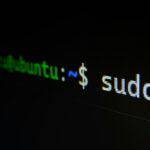Regarding website development, PHP is one of the most widely used server-side scripting languages. For a fresh or skillful developer, knowing how to install PHP on Ubuntu is commanding for proficient work in the field. This article will cover all the relevant information that a user will need to understand how to install PHP on Ubuntu, the possibilities of failure, and ways to avoid it. After reading this guide until the end, you can install PHP on your Ubuntu and develop web applications.
Why install PHP on Ubuntu?
Well, as for any Intro, it is best to explain why installing PHP on Ubuntu first is beneficial. Ubuntu is one of the most stable and easy-to-use operating systems derived from the Linux operating system and is preferred on web servers. On the other hand, PHP serves a large chunk of the online community through the World Wide Web. Thus, mastering how to install PHP on Ubuntu prepares you to develop engaging web applications using a stable OS.
Preparing Your Ubuntu System
That said, permit me to start installing PHP on Ubuntu by checking your Ubuntu system. Open a terminal and run the following commands:
- Update your package lists with command
apt update - Optionaly – upgrade existing packages with command:
apt upgrade
These steps help download the most recent versions of all installed packages to minimize installation incompatibilities when setting up PHP on Ubuntu.
As your system is understood to be ready for creation, let me explain the steps to install PHP on Ubuntu. In this topic, we will discuss the process of installing PHP and some commonly used extensions.
Installing PHP
For the installation of PHP earlier on Ubuntu, the tool that will be utilized is the Advanced Package Tool (APT). Here’s how:
- Open a terminal.
- To install PHP, type the following command:
sudo apt install php php-cli php-fpm php-json php-common php-mysql php-mbstring php-curl - Verify the installation with php -v
PHP should be available on your Ubuntu system when you finish these commands. You can verify the installation and see the version numbers using the terminal.
Installing PHP extensions
Although the standard PHP package offers a lot, you might require more features for your projects. Here’s how to install some common PHP extensions on Ubuntu:
- Find out the extension that you require.
- Since most of the extensions are developed by the Mozilla organization, it is advisable to install them using APT.
- Confirm that each of the extensions is properly installed.
Remember also that when installing PHP on Ubuntu, it is recommended that you install only those extensions you intend to use from the many available. This keeps the system trim and efficient because everything is carefully nurtured.
Configuring PHP on Ubuntu
When you are done installing PHP on Ubuntu, there may be additional settings that users will desire to adjust. The primary PHP config file is usually in the position /etc/php/apache2/php.ini. Here are some common configuration tasks:
- Adjusting the PHP memory limit
- Determining the maximum allowed size of the uploaded file
- Configuring error reporting
Before editing the configuration file, always back it up. Once you have done this, restart your web server, as this will help you apply the changes you have made.
Testing Your PHP Installation
However, now that you have gone through the process of installing PHP on Ubuntu, you must verify the installation. Here’s a simple way to do this:
- Form a PHP info file
- Save the file in your actual web server’s directory or root directory.
- Locate the file with your web browser.
If you come across a page containing the specific PHP configuration information, you’re indeed lucky. By performing the steps, you have installed PHP for Ubuntu and tested it to see if it is running properly.
Maintaining the Latest Release of PHP on Ubuntu
Finally, once you have installed PHP on Ubuntu, you should update it occasionally. Here’s how:
- Regularly update your system.
- Check for PHP updates.
- Install updates when they are available.
Thus, constant updates will keep you updated with the latest features and security updates.
Uninstalling PHP from Ubuntu
If you ever need to remove PHP from your Ubuntu system, here’s how:
- In this case, you would use APT to strip PHP and its dependencies away.
- Delete configuration files, if any.
- Update your package lists.
- Code: apt purge php* or apt remove php*
Conclusion
Knowing how to properly install PHP on Ubuntu is crucial for any web development practitioner. Although this guide covers preparation, installation, configuration, and troubleshooting, it has been explained here. Remember that after the PHP installation on Ubuntu is complete, some work continues; it is necessary to make frequent updates and perform maintenance.
FAQs
Can I install several PHP versions on Ubuntu?
Indeed, this is achievable; various ways of installing two or more PHP versions in Ubuntu exist. This can help you test your applications with different PHP versions. Specifically, it is helpful when you want to test an application with a different PHP version from the one currently installed on your server.
How do I determine the installed PHP version in Ubuntu?
To find your PHP version in the terminal, simply use the command php -v or php –version.


